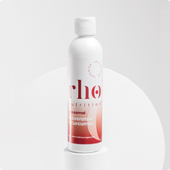Aging...
Aging is inevitable, but can we slow it down or even reverse it? In this article we will
explore the role of inflammation in aging and age-related diseases, and propose some
novel and practical anti-aging strategies based on inflammation modulation and
regulation.
What is Inflammaging?
Inflammation is a natural response of the body to injury, infection, or stress. It helps to
eliminate harmful agents and promote healing. However, when inflammation becomes
chronic and systemic, it can have detrimental effects on the body and contribute to
aging and age-related diseases. This phenomenon is called inflammaging 2 .
Inflammaging is characterized by elevated levels of inflammatory factors in the blood
and tissues, such as cytokines, chemokines, reactive oxygen species, and complement
components. These factors can damage the cells and organs, induce cellular
senescence, impair immune function, and promote disease development 1 .
What Causes Inflammaging?
Inflammaging is caused by a complex interplay of various factors, such as genetic,
epigenetic, environmental, metabolic, microbial, hormonal, and immunological factors 1 .
Some of the major causes of inflammaging are:
Cellular senescence:
Senescent cells are cells that have stopped dividing due to
DNA damage, telomere shortening, oxidative stress, or other reasons. Senescent
cells secrete a variety of inflammatory factors, known as the senescence-
associated secretory phenotype (SASP). The secretion of SASP from these
inefficient cells is begins to effect neighboring cells, inducing inflammation one
cell at a time 3 . Eventually, these senescent cells secrete enough SASP to spoil all
of their neighboring cells, leading to severe cellular dysfunction.
Immunosenescence:
Immunosenescence is the decline of immune function with
aging. It is characterized by reduced production and diversity of immune cells,
impaired response to antigens and vaccines, increased susceptibility to
infections and cancers, and chronic low-grade inflammation 4 .
Organ dysfunction:
Chronic inflammation can affect the function and structure of
various organs, such as the bone marrow, liver, lungs, brain, heart, kidneys, skin,
etc. For example:Inflammation can impair hematopoiesis in the bone marrow 5 , leading to
anemia, leukopenia, thrombocytopenia, and immunodeficiency.
- Inflammation can cause fibrosis in the liver, resulting in cirrhosis, portal
hypertension, hepatic encephalopathy, and liver failure.
- Inflammation can induce chronic obstructive pulmonary disease in the
lungs, causing airflow limitation, dyspnea, cough, sputum production, and
respiratory infections.
- Inflammation can promote neurodegeneration in the brain, contributing to
cognitive impairment, dementia, Alzheimer’s disease, Parkinson’s disease,
and stroke.
- Inflammation can increase cardiovascular risk in the heart, leading to
atherosclerosis, hypertension, coronary artery disease, myocardial
infarction, heart failure, and arrhythmias.
- Inflammation can impair renal function in the kidneys, causing proteinuria,
hematuria, azotemia, uremia, and chronic kidney disease.
- Inflammation can accelerate skin aging, causing wrinkles, sagging,
dryness, pigmentation, and skin cancer.
Age-related diseases:
Inflammation is also associated with many age-related
diseases, such as diabetes, obesity, arthritis, osteoporosis, cancer,
etc. Inflammation can both cause and result from these diseases, creating a
vicious cycle of disease progression and aging 1 . For example:
- In diabetes mellitus, hyperglycemia can induce oxidative stress and
inflammation, which can damage the pancreatic β-cells, impair insulin
secretion and sensitivity, and cause diabetic complications, such as
retinopathy, nephropathy, neuropathy, and cardiovascular disease.
- In obesity, excess adipose tissue can secrete inflammatory protein
messenger cells called cytokines and chemokines, which can activate that
activate certain biological signaling pathways in various tissues, leading to
insulin resistance, dyslipidemia, hypertension, and metabolic syndrome.
- In rheumatoid arthritis, autoantibodies (such as rheumatoid factor and
anti-citrullinated protein antibodies) can trigger inflammation in the
synovial joints, causing synovitis, cartilage degradation, bone erosion, joint
deformity, and disability.
- In osteoporosis, inflammation can stimulate osteoclast differentiation and
activity, leading to increased bone resorption and decreased bone
formation, resulting in low bone mass, fragility fractures, and increased
mortality.
- In cancer, inflammation can promote tumor initiation, progression,
invasion, metastasis, angiogenesis, and immune evasion, as well as
resistance to chemotherapy and radiotherapy.
How to regulate inflammation for anti-aging?
Since Inflammation is a key driver of aging and age related diseases, there are 4 basic
strategies to regulate inflammation:
Proactively promote healthy cellular energy production:
Cellular senescence can be initiated by a wide variety of stress factors such as damage to DNA,
mitochondrial damage and environmental damaging events. Improved cellular
energy provides healthy cells with the ability to overcome stress factors and
avoid senescence and the secretion and spread of SASP factors.
Targeting SASP factors or receptors:
SASP factors are responsible for inducing inflammation and senescence in normal cells. By blocking their production or action with specific inhibitors or antibodies, the harmful effects of SASP can be reduced or eliminated.
Enhancing immune surveillance or clearance of senescent cells or inflammatory factors:
Senescent cells and inflammatory factors accumulate with aging and
contribute to inflammaging. By boosting the immune system’s ability to
recognize and eliminate them with immunotherapy or phagocytosis enhancers,
the burden of inflammaging can be alleviated.
Modulating microbiota or metabolites that affect inflammation and aging:
Thegut microbiota plays an important role in modulating inflammation and aging
through its interactions with the host immune system and metabolism. By
manipulating the composition or function of the gut microbiota with probiotics,
prebiotics, synbiotics, or fecal microbiota transplantation, the inflammatory
status and aging process can be influenced.
Three Supplements to Regulate Inflammation for Anti-Aging
- NAD (nicotinamide adenine dinucleotide) a coenzyme that participates in
various metabolic reactions in the cells. NAD levels decline greatly after the age
of 30, which can impair cellular energy production, DNA repair, gene expression,
and stress response. NAD is the fuel source of every healthy cell and when NAD
declines so does cellular energy production and the cells ability to overcome
stress factors that lead to senescence. NAD can also enhance immune
surveillance or clearance of senescent cells or inflammatory factors by
increasing the activity of sirtuids which can modulate the function and diversity
of immune cells (such as T cells, B cells) and enhance immune recognition and
elimination of senescent cells or inflammatory cells.
2. Curcumin is a polyphenol derived from turmeric, a spice commonly used in Asian
cuisine. Curcumin can target SASP factors and receptors by inhibiting the
production and action of pro-inflammatory senescent cell secretions, (cytokines
and chemokines) and that are secreted by inflammatory cells and negatively
impact neighboring cells. Curcumin can also enhance immune surveillance or
clearance of senescent cells or inflammatory factors by activating the Nrf2
pathway, (a metabolic pathway which induces the expression of antioxidant and
detoxifying enzymes that can protect the cells from oxidative stress and
inflammation. These antioxidants combat and neutralize accumulations of
oxidative stress and prevent large scale inflammation. Curcumin can also
modulate microbiota or metabolites that affect inflammation and aging by
altering the composition and function of the gut microbiota, enhancing the
intestinal barrier integrity, reducing the translocation of endotoxins and
pathogens, and producing anti-inflammatory metabolites (such as short-chain
3. Resveratrol is a polyphenol found in grapes, red wine, and Japanese knotweed.
Resveratrol can target SASP factors and receptors by inhibiting the activation of
inflammasome pathways, which are responsible for the synthesis and release of
pro-inflammatory cell secretions (cytokines and chemokines) by inflammatory
cells. Resveratrol can also enhance immune surveillance or clearance of
senescent cells or inflammatory factors by activating SIRT1, (a family of proteins
that regulate cellular survival and cellular senescence and that is fueled by
NAD+) Resveratrol can also modulate microbiota or metabolites that affect
inflammation and aging by altering the composition and function of the gut
microbiota, enhancing the intestinal barrier integrity, reducing the translocation
of endotoxins and pathogens, and producing anti-inflammatory metabolites
(such as short-chain fatty acids) 3 .
Liposomal Curcumin + Resveratrol

$59.00
Rho Liposomal Curcumin + Resveratrol blends the powerful effects of Curcumin and Resveratrol, encapsulated in a liposomal form for superior absorption. Offering up to 1000% increased bioavailability, just one teaspoon a day helps combat inflammation and promotes healthy joints. … read more
Conclusion
Inflammation is a double-edged sword that can be beneficial or harmful depending on
the context and duration. Inflammaging is a chronic and systemic inflammation that
accelerates aging and age-related diseases. By understanding the molecular
mechanisms and cellular dynamics of inflammation and aging, and by developing novel
and practical anti-aging strategies based on inflammation modulation, we may be able
to delay or reverse the aging process and improve the quality of life for the elderly.
1. Li, X., Li, C., Zhang, W. et al. Inflammation and aging: signaling pathways and intervention
therapies. Sig Transduct Target Ther 8, 239 (2023). https://doi.org/10.1038/s41392-023-01502-8
2. Campisi, J. et al. From discoveries in ageing research to therapeutics for healthy
ageing. Nature 571, 183–192 (2019).
3 Hagen, M. & Derudder, E. Inflammation and the alteration of B-cell physiology in
aging. Gerontology 66, 105–113 (2020).
4. Yousefzadeh, M. J. et al. An aged immune system drives senescence and ageing of solid
organs. Nature 594, 100–105 (2021).
5. Labrie, J. E. 3rd et al. Bone marrow microenvironmental changes underlie reduced RAG-
mediated recombination and B cell generation in aged mice. J. Exp. Med. 200, 411–423 (2004).













.png)






